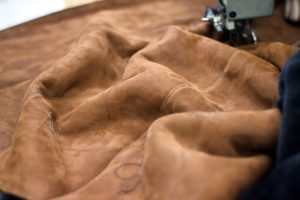Last Updated on June 1, 2022
Let’s keep your sewing machine running smoothly. In this article we will teach you all about sewing machine oil and how to keep your machine properly oiled.
Maintaining and cleaning your sewing machine is important to keep it in good working order. If you disregard cleaning and oiling your machine, you’ll feel it getting clunky as you use it over time. One way to keep your sewing machine running smoothly is by using sewing machine oil.
In this article we will talk about what sewing machine oil is and how you can use it for your sewing machine maintenance.
We will also talk about what the best substitute for sewing machine oil would be, as well as what happens if you don’t use any at all!
What is sewing machine oil?
Sewing machine oil is a special lubricant made specifically for the parts and gears of a sewing machine. Its purpose is to lessen friction between the machine’s moving parts to keep them from jamming up and to ensure a smooth sewing experience.
Sewing machine oil is what you apply to the needle bar, the bobbin area, and other moving parts of your sewing machine in order to keep it running smoothly. The more you use a sewing machine, the dirtier it will get over time.
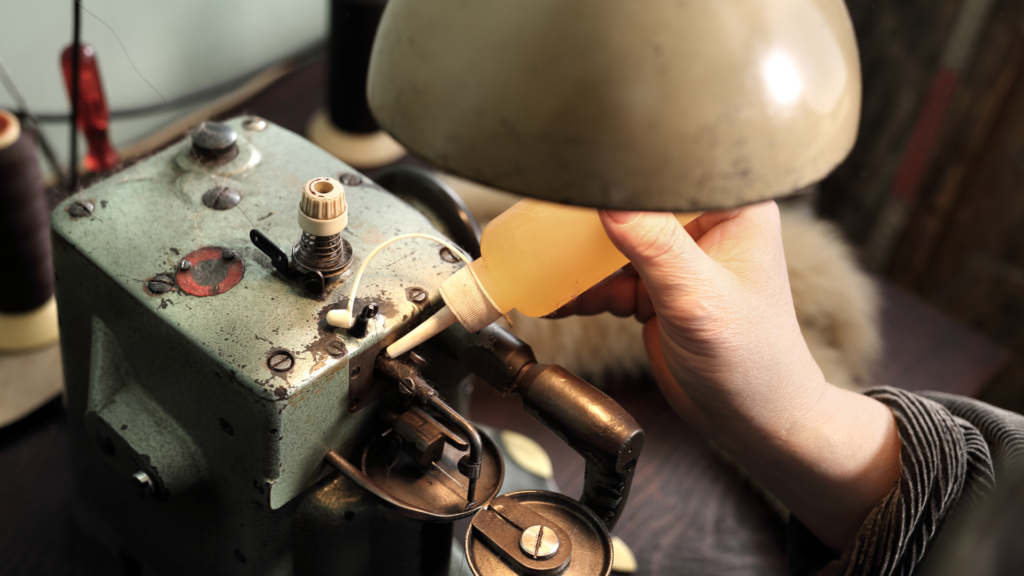
Why do I need to oil my sewing machine?
Sewing machines are prone to clogging from all that built-up grime and debris which can lead to some common sewing machine problems. On the other side of the spectrum, being diligent in cleaning and oiling your sewing machine helps to solve a lot of machine issues.
In one of our previous guides, we pointed out that oiling your sewing machine also helps to prevent the machine from overheating. When a sewing machine heats up from what I would say is normal use, the tension can rise and eventually cause damage.
Oil also helps to lubricate your needle which makes it possible for you to sew faster without having any problems with your sewing machine skipping stitches or jammed fabric.
The outside of the machine may start to become more prone to wear as well if you don’t keep an eye out on what parts need oiling. By using some type of sewing machine cleaner and following our tips on how to oil your sewing machine, this will help reduce what could happen in terms of wear-and-tear that comes along with neglecting maintenance work.
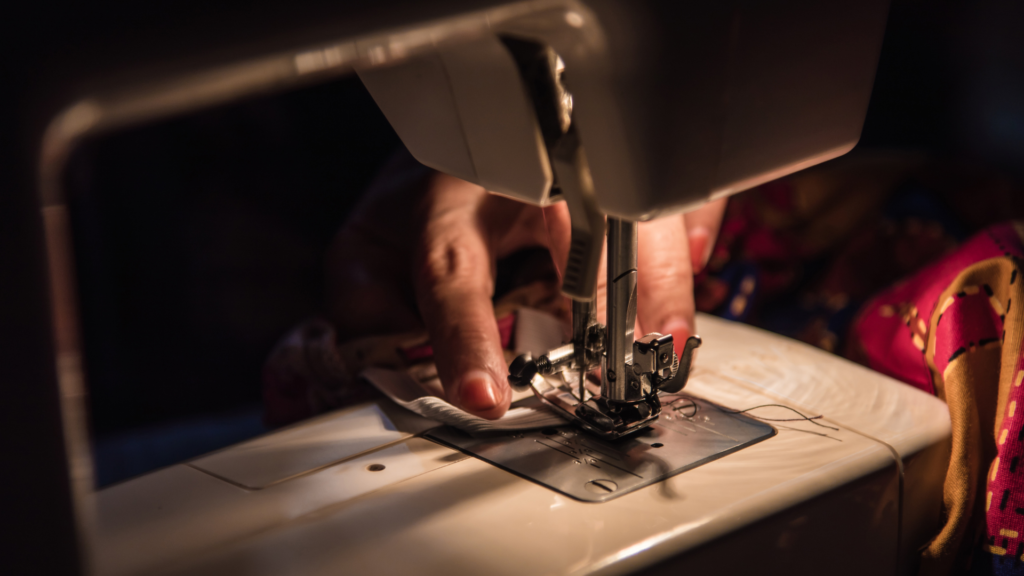
What are the benefits of using a sewing machine oil?
There are many benefits to using a sewing machine oil when doing your maintenance. Some of these benefits include:
- It helps protect against rust and corrosion.
- It keeps your sewing machine running smoothly, especially the needle bar area.
- It prevents accidental thread breakage during bobbin winding.
Types of sewing machine oils
There are three main types of sewing machine oils:
Mineral Oil
This type of sewing machine oil is the most effective. It has been what most sewing machine manufactures have recommended for their machines.
However, this type of oil is non-drying and can collect dust or dirt in the needle area which will clog up your machine’s filters much quicker than any other types of oils would.
Therefore, you should only use mineral oil when it is necessary since it also doesn’t lubricate as well as some of the other oils that are available on the market today. If you’re going to be using a lot of thick fabric like denim and wool at one time though, then mineral oil may be what you need because it helps reduce friction so stitching becomes smoother without an issue with skipped stitches or jammed fabrics getting stuck while trying to sew them together.
Synthetic Oil
Synthetic oil is an artificial alternative if you don’t have mineral oil available. It is what you should use for your sewing machine if it’s at the end of its life cycle or not using any other oils. It doesn’t dry out like some of the other oils that are on the market and will also help to keep dust from entering into your sewing machine because it has a water repellent property which helps keep dust particles from sticking to parts inside.
Synthetic oil can be used with all types of fabric, but as mentioned before, it has a more liquid consistency than mineral oil so when something does get jammed in there, synthetic oil may make things worse since trying to force anything through this type of grease is going to cause more problems than what you’d have without lubrication.
Natural Oil
Natural oils can be an alternative to mineral and synthetic oil, but are less effective than them.
Natural oils will clog up most machines and make them unusable within weeks whereas mineral oil or synthetic oil can last months without needing to be replaced because it has more liquid consistency that allows it to coat all surfaces inside your machine evenly without leaving residue behind.
Clipper Oil
Clipper oil and sewing machine oil have many similarities. Clipper oil is a light-weight natural oil derived from animals, seeds or vegetables.
It’s what you might use to lubricate your clippers and it could be used in a pinch as sewing machine oil but will not last nearly as long before being needed again.
Clipper oils are generally cheaper than many types of synthetic oils though they may still cost more than mineral coolants when the bottle size is smaller because mineral oils typically come with larger bottles at lower prices per ounce while clipper and sewing machine oils often come in small bottles that can run up quite an expensive bill if you need to keep reordering them for each time you want to sew something new.
Types of oil that you shouldn’t use for your sewing machine
Here’s a list of oils that you shouldn’t use to oil or lubricate your sewing machine:
- Cooking oil
- Coconut oil
- Olive Oil
- Mustard Seed Oil
- Bovine Liver Oils (Tallow)
- Lanolin/Wool Waxes, as they may gum up the machine. If you need a lubricant for your sewing-machine belt, use either white petroleum jelly or silicone spray instead of these oils.
- Motor oil
- Kerosene
- Gasoline
- Automotive oil
When should you oil your sewing machine?
You should clean and oil your sewing machine once you see these signs below:
- The machine starts to smoke when you turn it on.
- You can see dust and grime in the gears, or what is called “sewing dirt” which is a mixture of oil residue with bits of fabric that have been ground up by friction.
- Your machine makes an unusual noise that isn’t normal – this means your sewing machine needs some attention.”
- When you see seams aren’t aligned
- When there’s a burnt smell coming from the sewing machine.
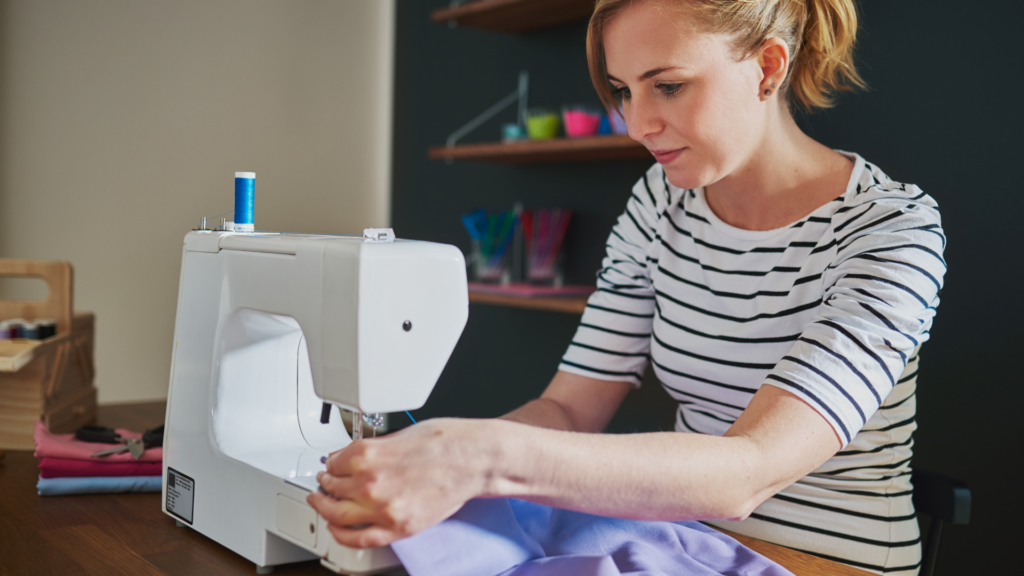
Some Final Words
Some people think it’s too costly to buy a container of sewing machine oil when they can just use soap or cooking oil instead but this might cause more harm than good since both substances are made primarily out of water so as time goes on your parts may be exposed to moisture that causes corrosion over time.
When it comes to maintaining, cleaning, and oiling your sewing machine, it’s always better to invest on your cleaning and oiling materials because it ensures that your machine will always be at its best condition and any form of damages will be prevented.
We hope this guide helped you understand more about sewing machine oil. Happy sewing!

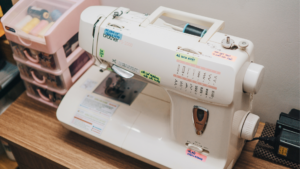



![Read more about the article Your Ultimate Guide On How To Use A Serger Sewing Machine [2023]](https://www.sewkitkit.com/wp-content/uploads/2021/09/serger-Y-300x169.png)
